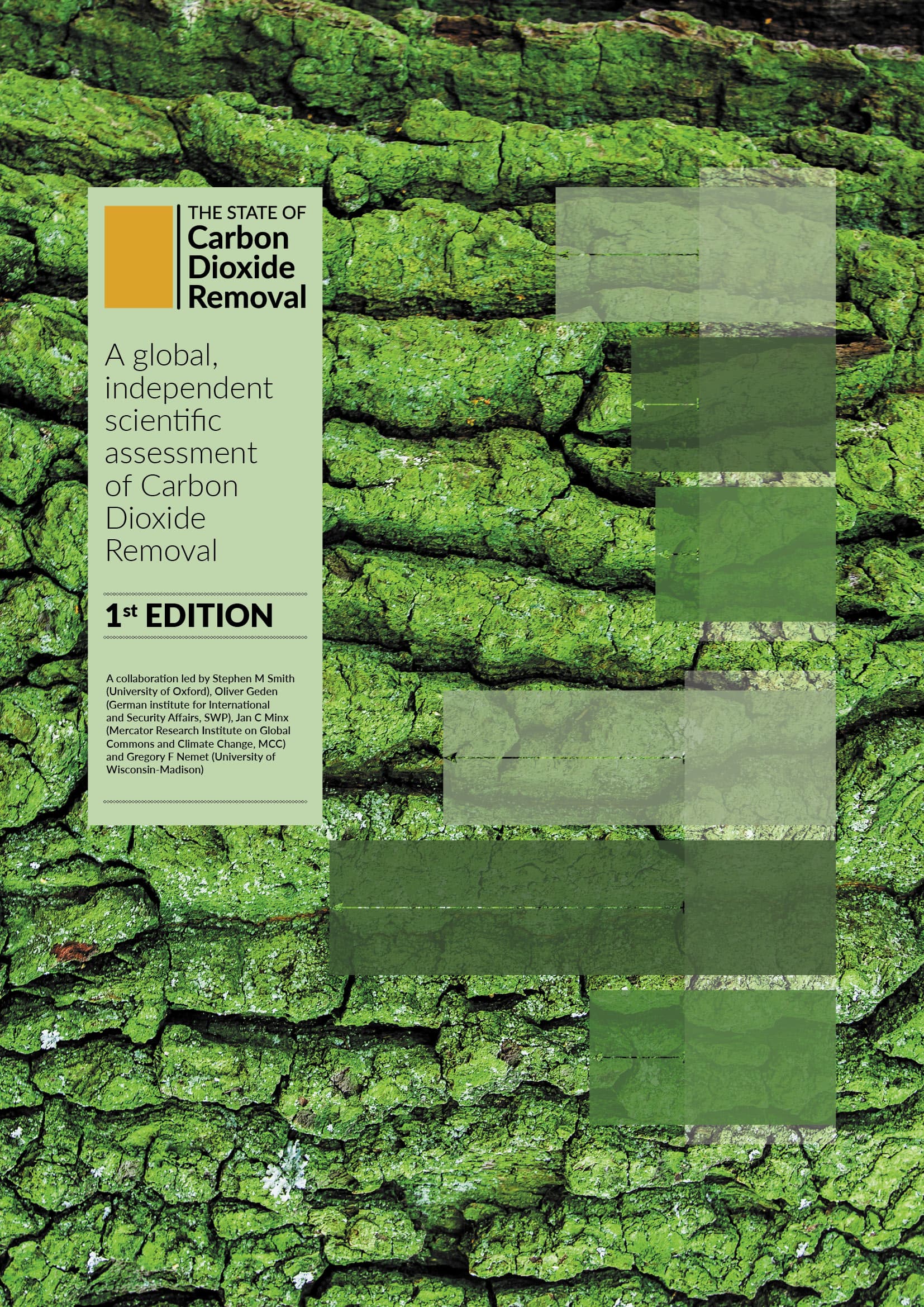New report reveals large gap in Carbon Dioxide Removal needed to limit global warming

For the first time, a new report provides a comprehensive assessment of the current state
of Carbon Dioxide Removal (CDR).
● 99.9% of current CDR is from conventional methods such as afforestation (2 GtCO2/yr) and
0.1% (0.002 GtCO2/yr) is from novel methods such as biochar, bioenergy with carbon capture
and storage (BECCS), and direct air capture with carbon capture and storage (DACCS).
● There is a large gap between how much CDR countries are planning and what is needed to
meet the Paris Agreement goal.
● 1,300x more CDR from new technologies – and twice as much from trees and soils – may
be necessary to limit temperatures to well below 2°C.
Carbon Dioxide Removal (CDR) from the atmosphere, alongside rapidly reducing emissions, is
needed to reach the Paris Agreement temperature goal to limit warming to well below 2°C and
pursue efforts to achieve 1.5°C. This is highlighted in the first “State of Carbon Dioxide Removal”
report, which convenes over 20 experts in the field of CDR and was led by Oxford University’s
Smith School of Enterprise and the Environment.
According to the report, almost all current CDR comes from conventional removal methods on
land (2 GtCO2 per year), primarily via planting trees and managing soils. Countries need to
maintain and expand this, approximately doubling in 1.5°C pathways and increasing by around
50% in 2°C pathways by 2050 compared to 2020 levels. In a warming climate, this is a huge
challenge that requires dedicated policies and management, say the authors.
But virtually all pathways also require new CDR technologies, such as BECCS, biochar, enhanced
rock weathering and DACCS. New CDR technologies make up only a tiny fraction of current CDR
(0.002 GtCO2 per year). Closing the CDR gap requires rapid growth of these new CDR
technologies, by a factor of 1,300 on average by 2050.
“To limit warming to 2°C or lower, we need to accelerate emissions reductions. But the findings of
this report are clear: we also need to increase carbon removal, too, by restoring and enhancing
ecosystems and rapidly scaling up new CDR methods,” says report author Dr Steve Smith of the
University of Oxford’s Smith School of Enterprise and Environment. “Many new methods are
emerging with potential. Rather than focusing on one or two options we should encourage a
portfolio, so that we get to net zero quickly without over-relying on any one method.”
CDR is not a silver bullet, as pathways that limit warming to 2°C or lower require deep cuts to
emissions in addition to, not in place of, CDR. Our dependence on CDR can be limited by reducing
emissions fast and using energy more efficiently, say the report authors.
While research, innovation and public awareness of CDR have expanded, closing the CDR gap
requires urgent and comprehensive policy support. The amount of CDR deployment required in
the second half of the century will only be feasible if we see substantial new deployment in the
next 10 years – novel CDR’s formative phase.
“Innovation in CDR has expanded dramatically in the past two years, as measured by investment
in capacity, publicly funded research, and patents. But given the orders of magnitude the CDR
industry needs to grow by mid-century to limit warming, there is an urgent need for
comprehensive policy support to spur growth,” says co-author Professor Gregory Nemet of the
University of Wisconsin-Madison’s La Follette School of Public Affairs.
“CDR is not something we could do, but something we absolutely have to do to reach the Paris
Agreement temperature goal,” said author Dr Oliver Geden of the German Institute for
International and Security Affairs. “More than 120 national governments have a net-zero
emissions target, which implies using CDR, but few governments have actionable plans for
developing it. This presents a major shortfall.”
This report is intended to regularly inform researchers, policymakers and practitioners on the
state of progress, by systematically collecting and analysing the vast amount of data and
developments in many parts of the world.
“Right now critical information on CDR is widely dispersed and difficult to access. This hampers
progress,” says author Jan Minx from the Mercator Research Institute on Global Commons and
Climate Change (MCC) in Berlin. “The state of CDR research, development and policy lags behind –
similar to renewables 25 years ago. Good decisions and accelerated progress in the field of CDR
require adequate data. This report will help improve this situation step-by-step with the wider
CDR community.
About The State of Carbon Dioxide Removal report
The State of Carbon Dioxide Removal report is the first global assessment of the state of CDR and
the gap we need to close. With future editions of this assessment, we aim to build a community,
bridge data gaps and support the scale up of CDR responsibly and equitably. This year’s report is
led by the University of Oxford’s Smith School of Enterprise and the Environment.
The project has been devised and convened by researchers Oliver Geden (German Institute for
International and Security Affairs, SWP), Jan Minx (Mercator Research Institute on Global
Commons and Climate Change, (MCC), Berlin), Gregory Nemet (University of Wisconsin-Madison)
and Stephen M Smith (Smith School of Enterprise and the Environment, University of Oxford).
The report is supported by our project CDRSynTra.
See the full State of CDR Report
Watch The State of Carbon Dioxide Removal report launch on Youtube